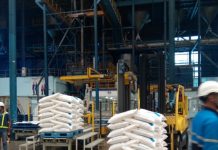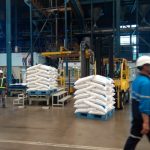INDIA MIGHT FAVOR BRAZIL AND PRICES
The week was made shorter due to the holidays in the USA on Monday and in Brazil on Thursday. The sugar futures contract in NY, with a smaller volume, closed out Friday at 17.69 cents per pound for July/2021, a positive fluctuation of 33 points against last week, or 7.28 dollars per ton. The real continued appreciating against the American currency and closed out at R$5.0479, appreciating 3.4% over the week. Now the quotations converted into real, shrank by about 35 real per ton up to the end point of the curve (March/2022).
Hydrous reached the parity with sugar and as we said some weeks ago, I kind of fear that the mills with financial trouble might put off their sugar delivery commitments of this crop to the next and make more ethanol to take advantage of the prices way above the level of fixation. I hope I’m totally wrong.
The market is still irregular, unpredictable and inconsistent and what we mostly see is some narrative molding so that it can justify the highs and lows of the daily market closings – it’s wood, it’s stone, it’s the shortage of rain, it’s too much rain, it’s the high cycle of the commodities, it’s the end of the month, it’s the beginning of the month. There are lots of excuses.
We (human beings) have not been wired not to have concrete answers to our questions. And when it comes to commodities, our view couldn’t be any different. As Taleb would say in the delightful book “Fooled by Randomness”, “We tend to look at what confirms our knowledge and not at our ignorance”. No wonder we need narratives that justify what goes on around us. Or, when we genuinely believe in a concept or in a fake story shared by WhatsApp groups or in a corrupt political group, we try to see just the part that justifies our choices. A good dose of “I don’t know” would be nice for our daily analysis. Taleb goes on, “Difficulty is what awakens the genius”.
Some great impact news over the week came from India, though it (still) hasn’t reflected on quotations of the futures exchange in NY. The Indian government in line with the national policy of the biofuels is looking into moving up the increase in ethanol percentage mixed in gas from the current 10% to 20% in 2023 (it was to be in 2025). In order to meet ethanol demand within this percentage, India will need 12 billion liters, a part from grains and 7 billion liters from sugarcane.
The reduction in the reliance on oil import with the allocation of more sugarcane to ethanol production strengthens India’s domestic sugar market, whose consumption will jump from the current 28.5 million tons to 31.0 million tons in five years, decreases the availability of sugar for the world market and reduces government expenses with subsidies. The government is favored by less expenses in US$ with oil import, less expenses in rupees with sugar export subsidy, causing the natural strengthening of the domestic market and the export surplus cutting.
For Brazil, if we draw the scenario for a decade down the line, there are big chances of India – if it doesn’t expand the sugarcane culture – becoming a sugar importer by the end of this decade, leaving Brazil with the arduous task of supplying the foreign market, which should grow at least over the next 5 years by a conservative rate of 1% per year.
I’m not being sarcastic when I say “arduous task”. The expansion of the sugarcane area in Brazil over the last 10 years has been 0.83% per year. Ethanol total consumption has grown 1.75% per year over the same timeframe. The Brazilian GDP has grown below the world GDP. If we imagine a recovery framework of the economy, with the resumption of fuel consumption, it’s not hard to say that we will need more sugarcane to meet the demand that is coming up.
Before the pandemic, fuel consumption (Otto cycle) had been growing by 3.8% per year on average over the last ten years. The blow the Brazilian economy underwent due to the pandemic reduced the growth by two percentage points. In short, looking at ten years down the line, we might have the combination of several factors with greater or smaller intensity, but clearly constructive in terms of the trajectory of sugar international prices:
a) India being just a residual exporter of sugar
b) Greater world demand for renewable fuels
c) Recovery of the Brazilian economy with the expansion of fuel consumption
d) Increase of the Brazilian fleet of light vehicles
e) World sugar consumption expanding by at least 1% per year over the next 6 years, led by Asia
However, in order for Brazil to be able to take advantage of the challenge that should shake the sector over the next years, which is to meet the possible expansion of domestic consumption of fuels and the vigorous increase in per capita sugar consumption in Asia, the country will – assuming it will keep the same market share on the world market – have to close out the 2020s crushing between 780 and 850 million tons of sugarcane – broadly speaking, between 15 and 20 new/renovated mills crushing at least 5 million tons per year.
It will be a decade promising prosperity to the sector – even more so if mergers and buyouts occur with the entry of new and financially robust agents. My greatest fear is a possible harmful interference of the federal government in the gas pricing policy relapsing into the years of administered prices favoring groups of political supporters.
To read Episode 1, click here.
Mr. Arnaldo Luiz Correa is the Director at Archer Consulting. He is a Risk Manager with an experience of almost 30 years in the agriculture commodities market.
To get in touch with Mr. Arnaldo, write on arnaldo@archerconsulting.com.br












